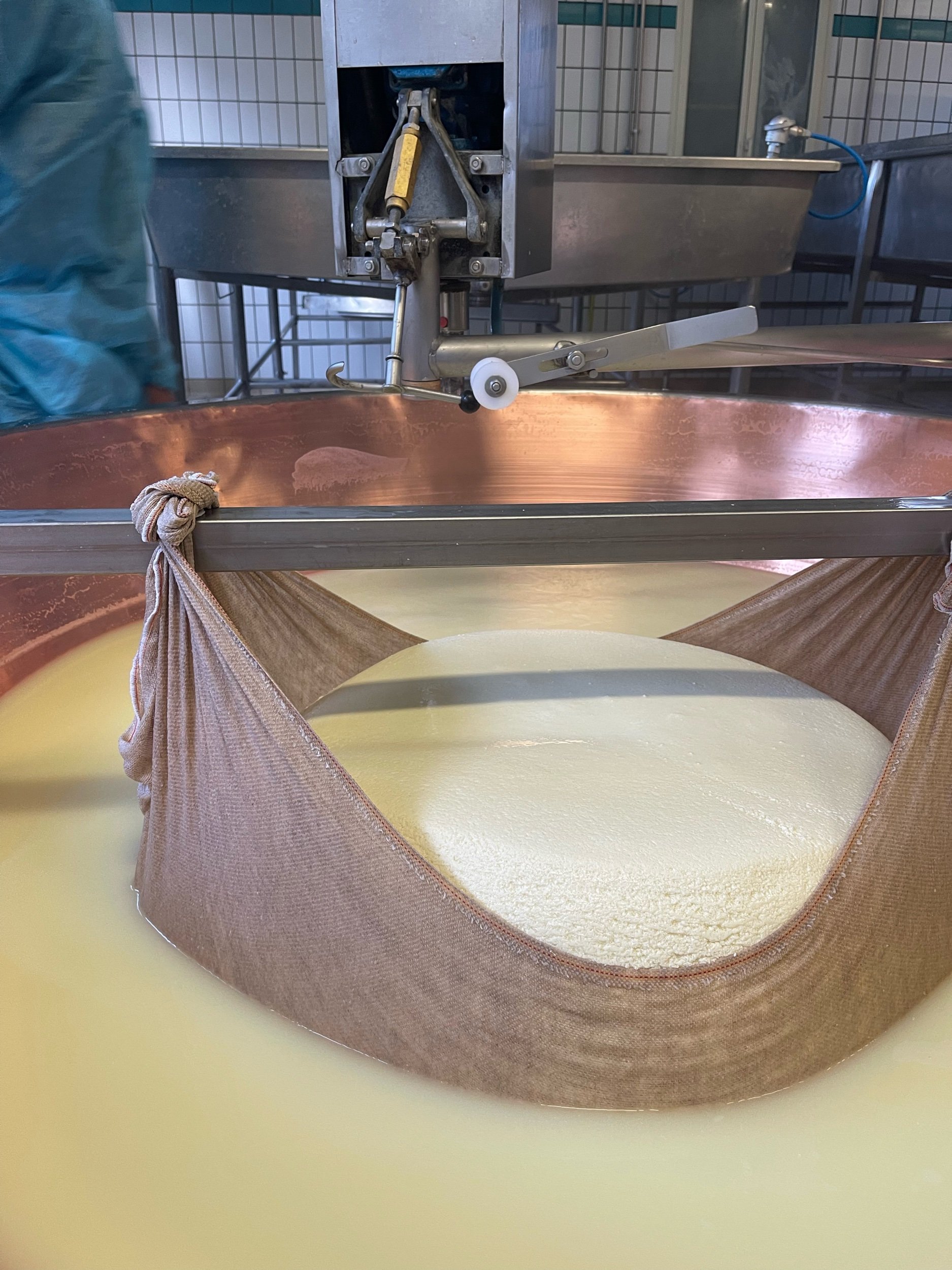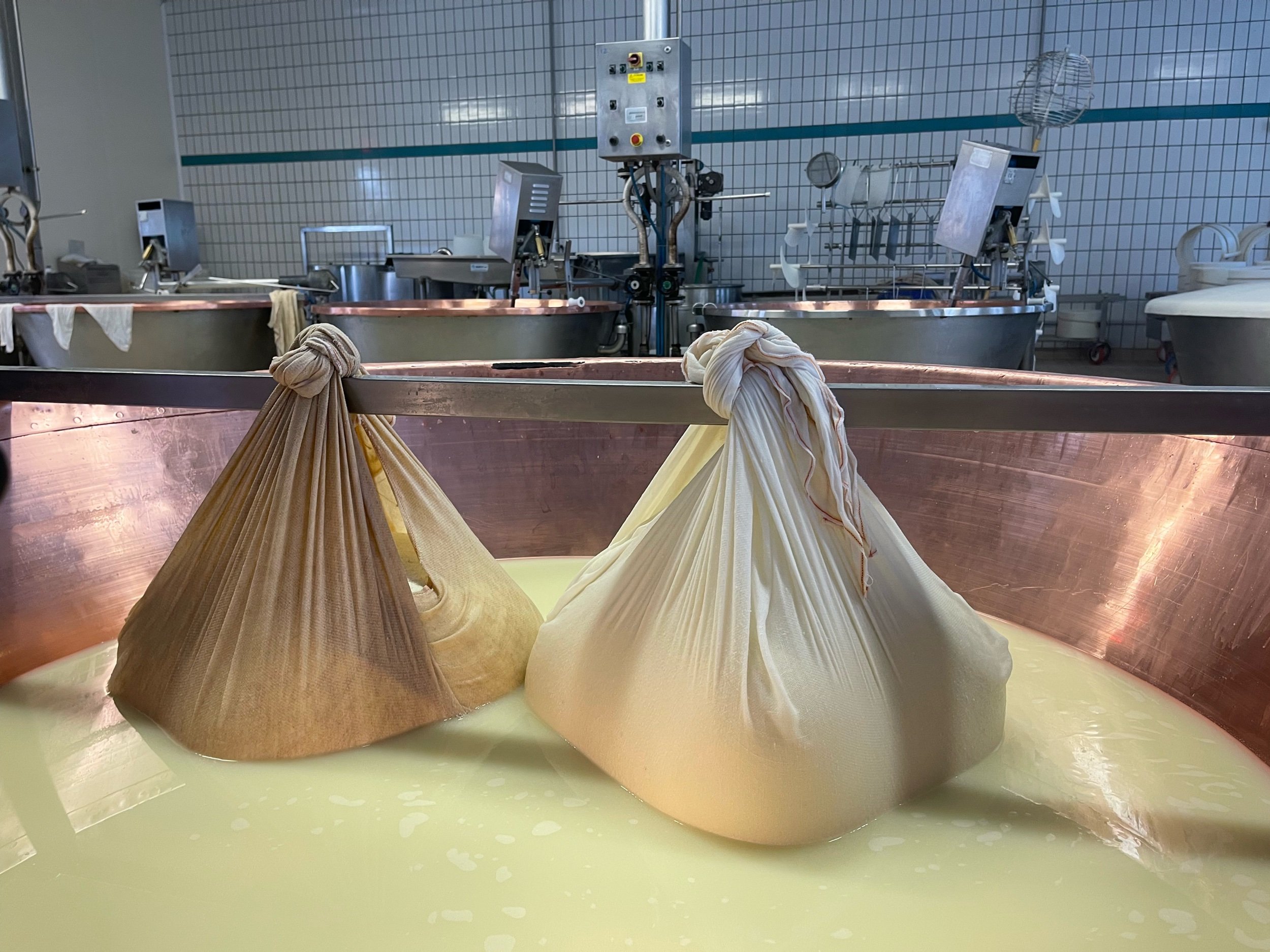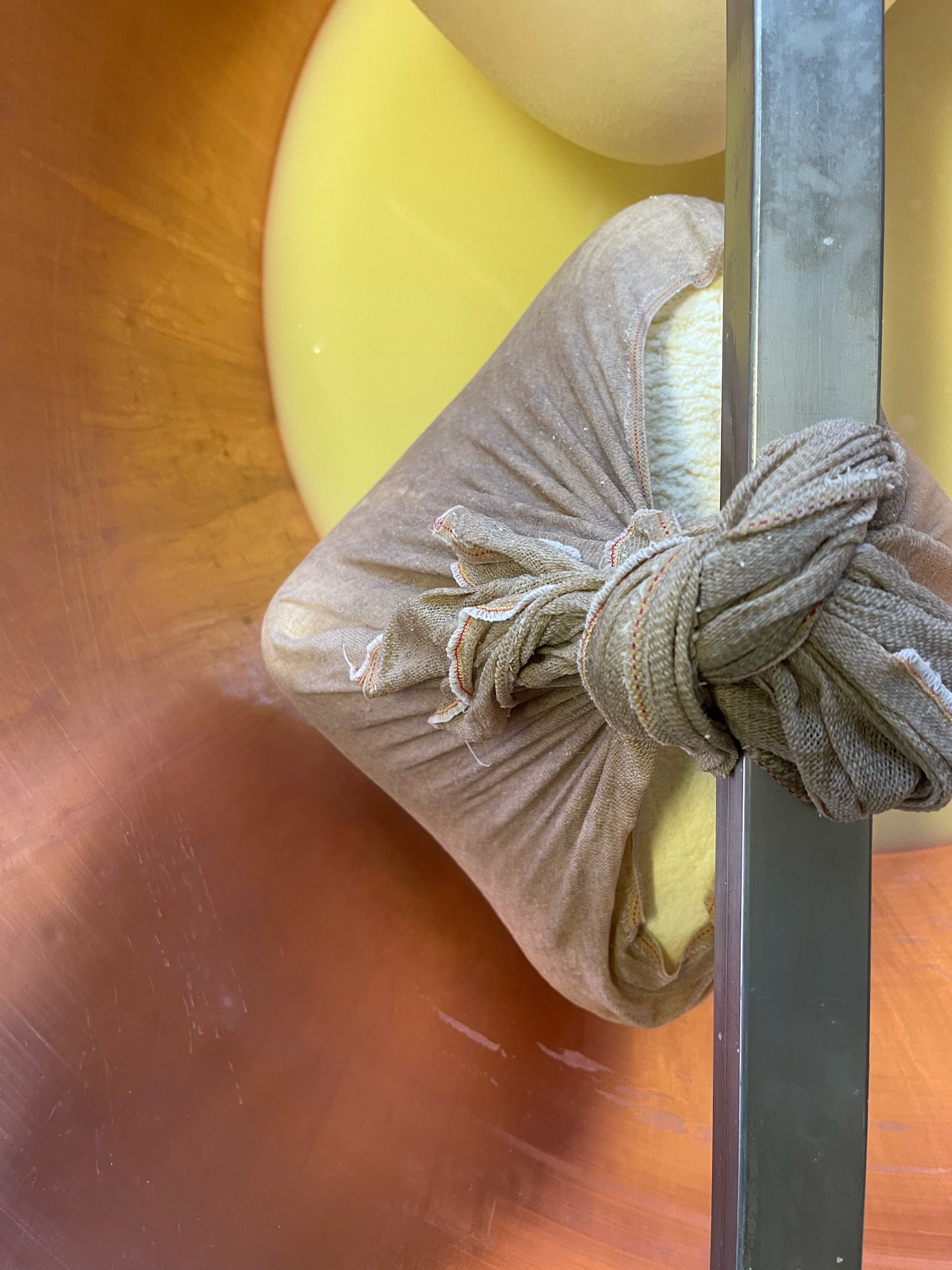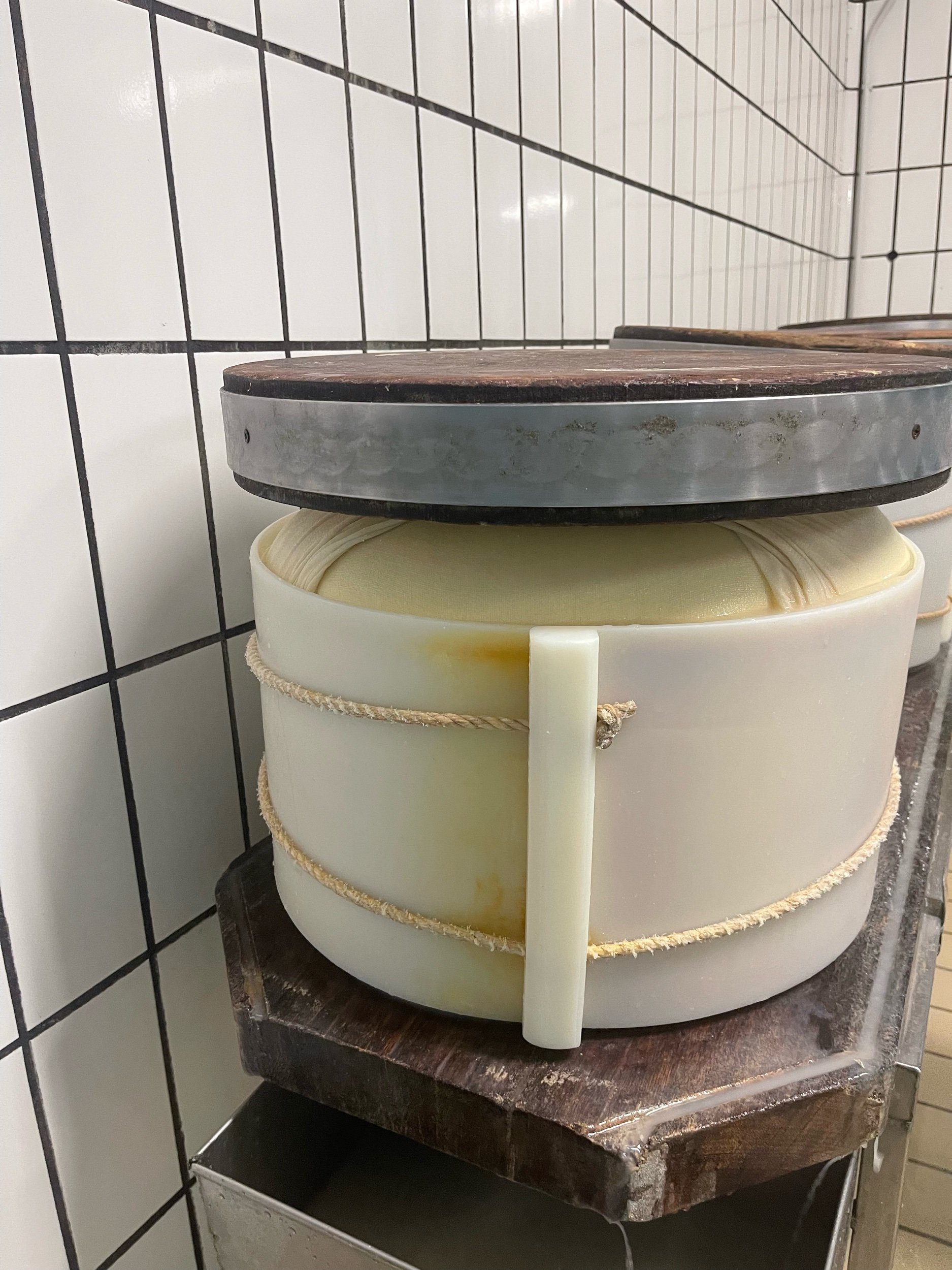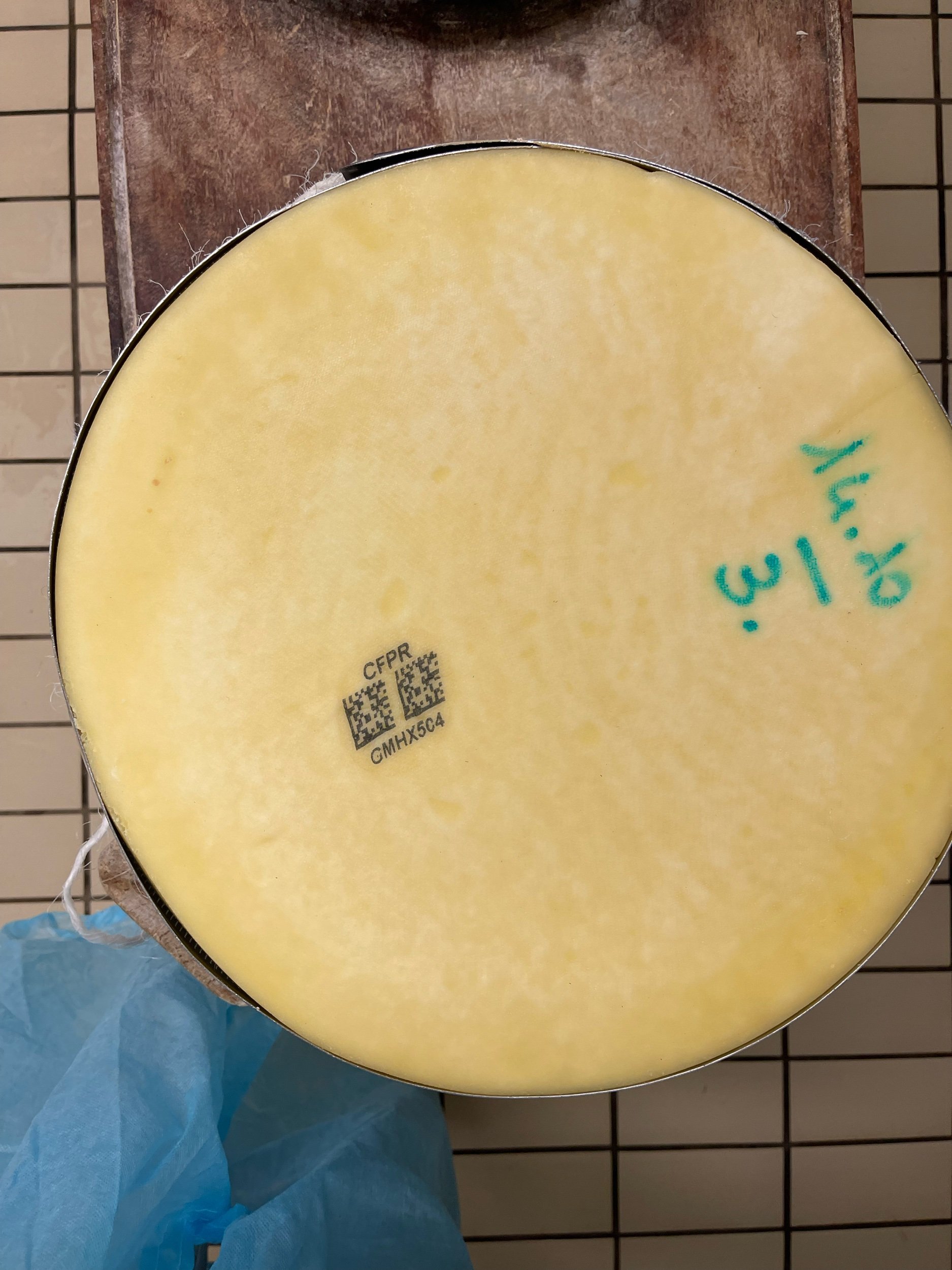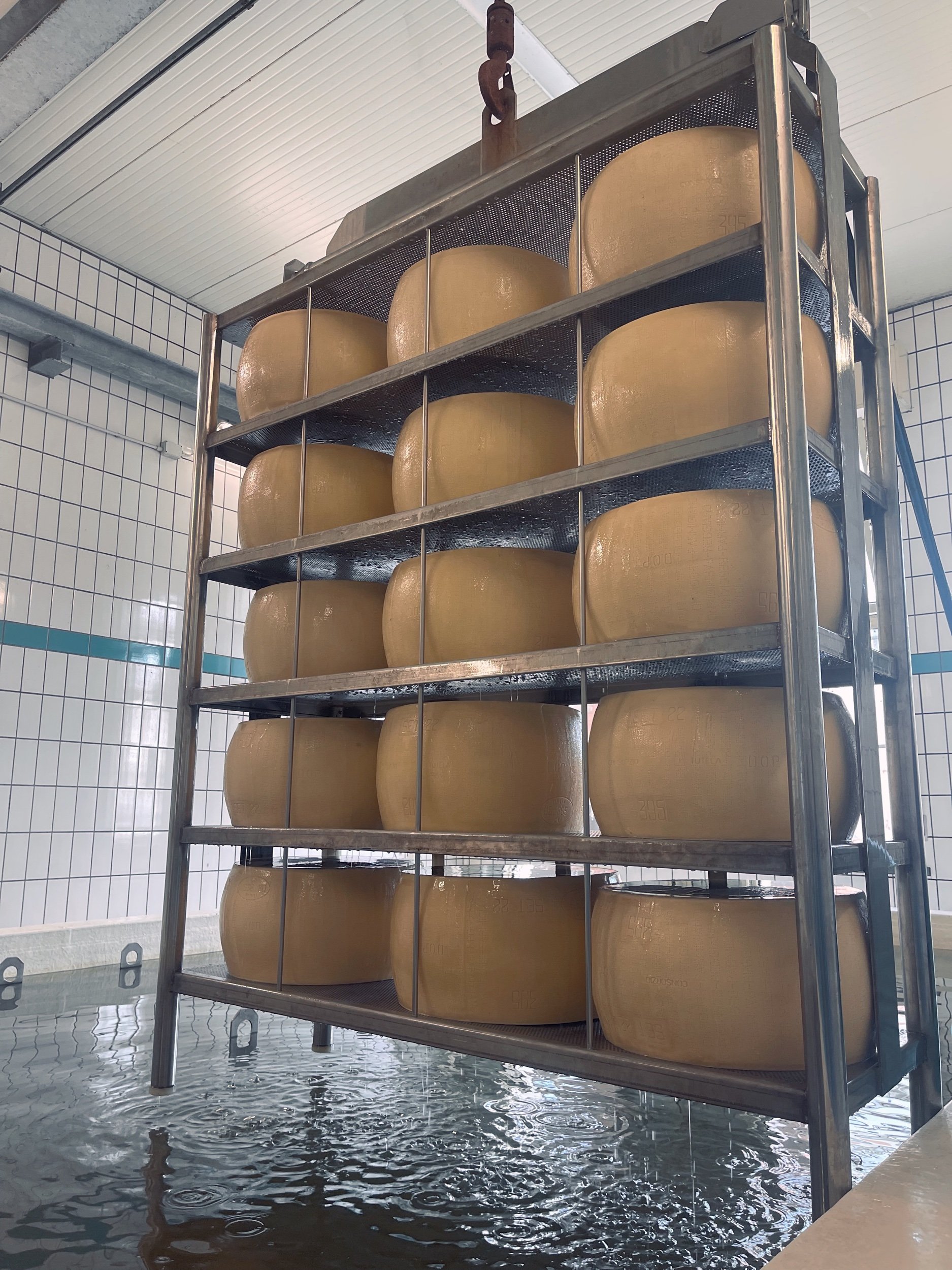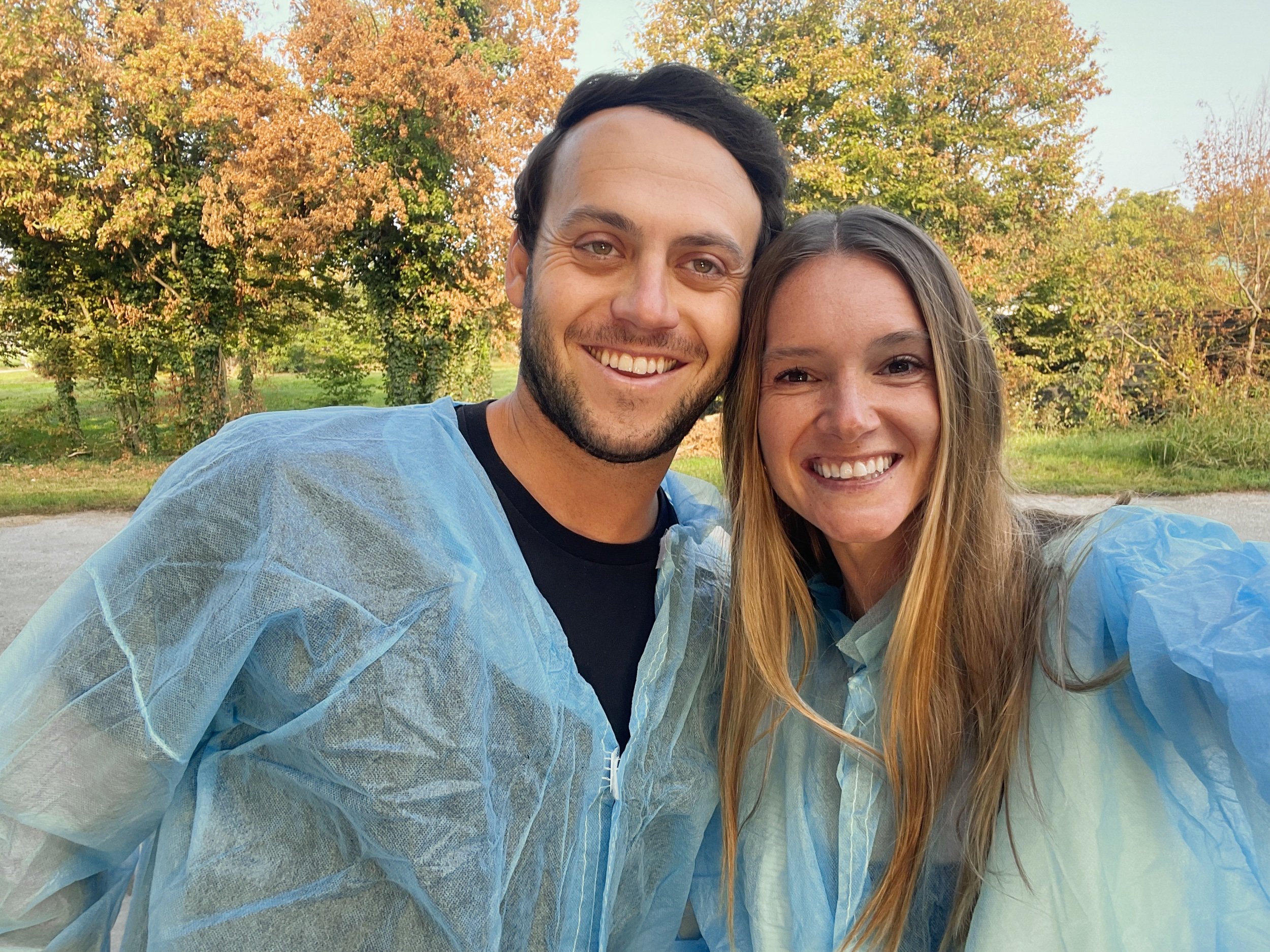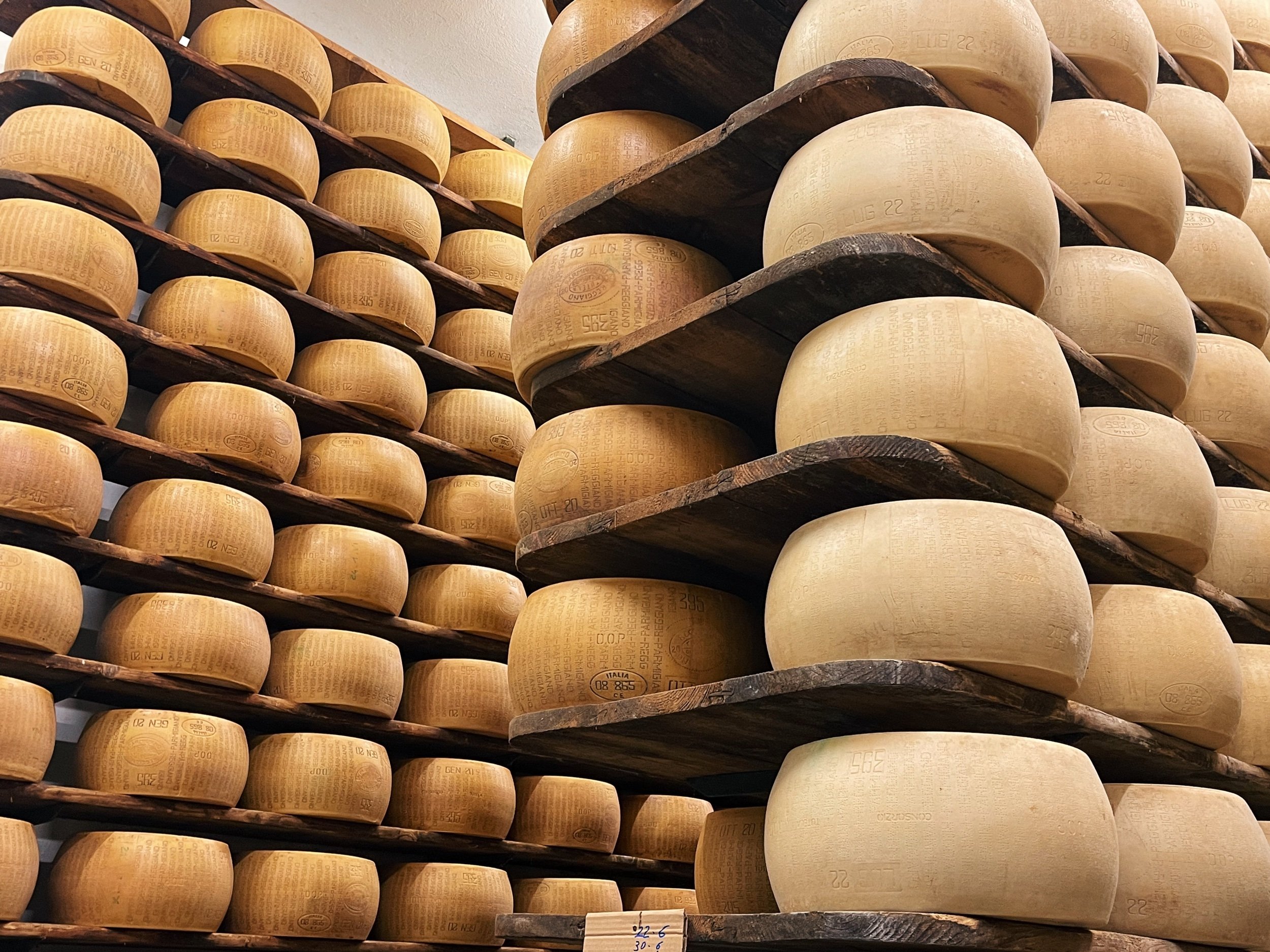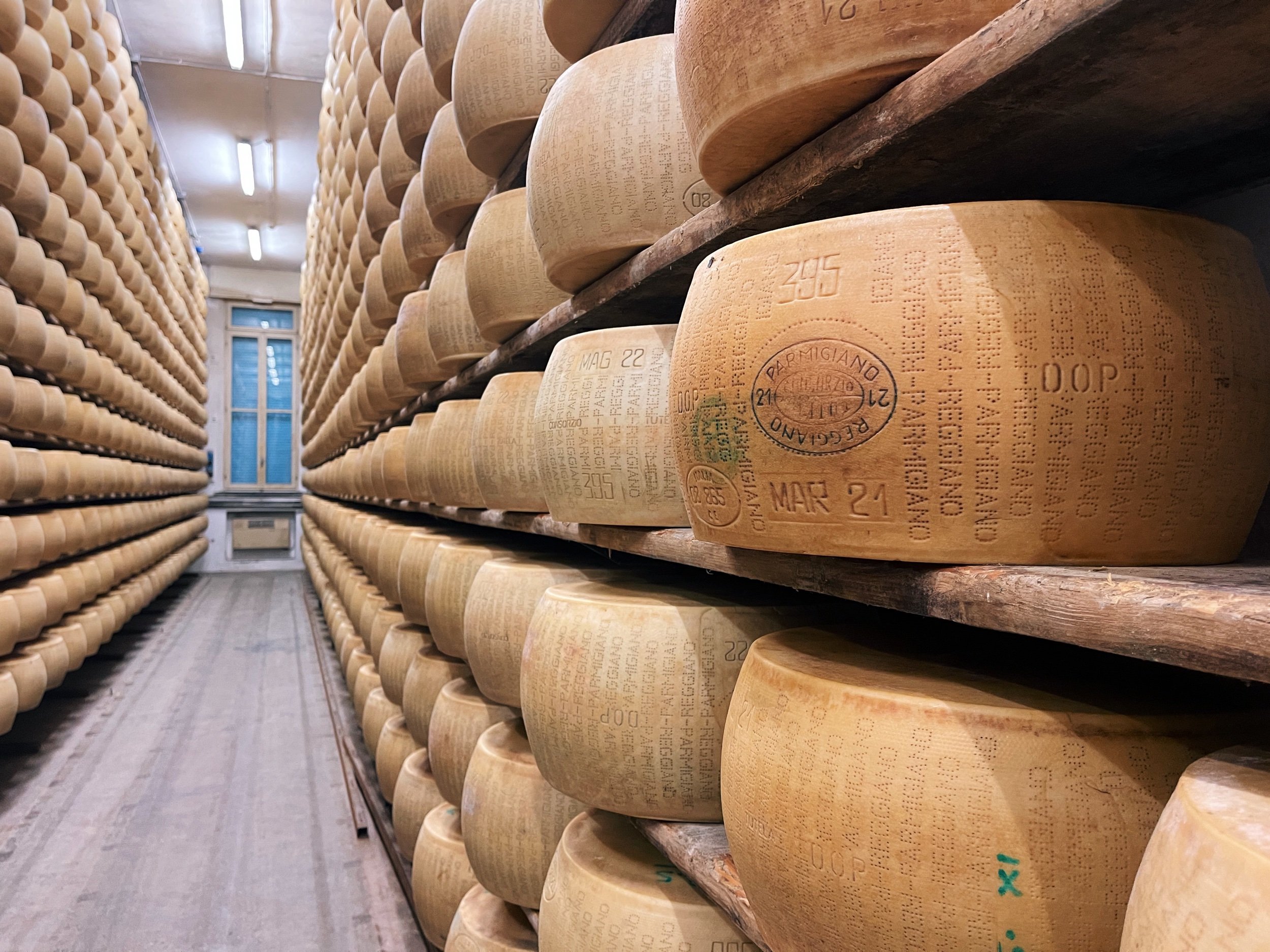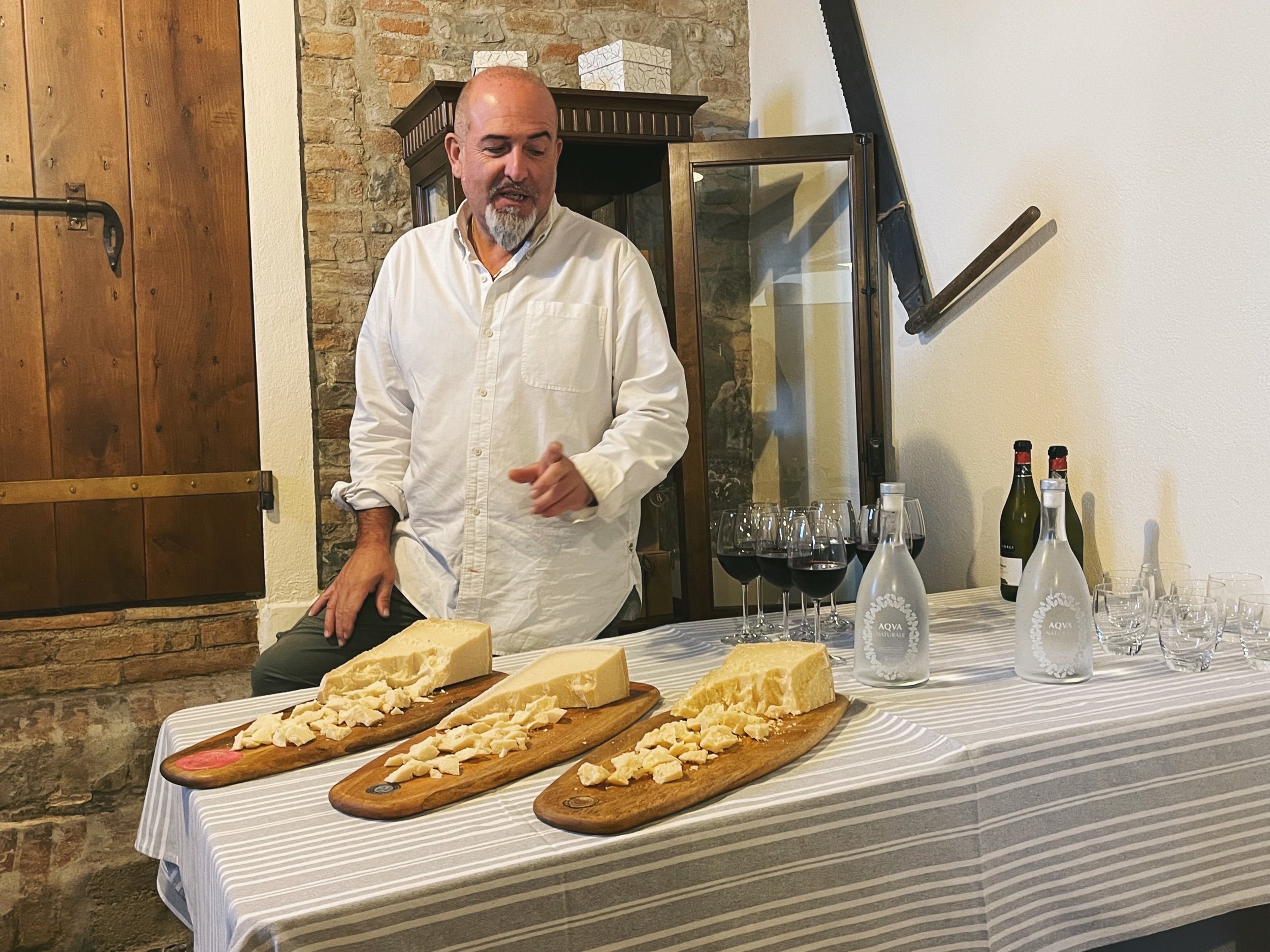The Real Parmigiano Reggiano
If it isn’t DOP, it isn’t for me!
Famous for the pronounced flavor and flaky texture, parmesan is one of the most consumed cheeses in the world. And our household is no exception. It has an addictive quality that stimulates the tastebuds to crave. Something akin to a tannic wine where you yearn for the next sip. Yet during our time in Italy, we discovered that most parmesan we consume is not the “real” parmesan. The authentic stuff is parmigiano reggiano, where all ingredients - the cow’s milk, the grass, and the salt - must come from the Modena-Reggio-Emilia-Parma region. Furthermore, each cheese wheel goes through a rigorous inspection process and only the worth receive the DOP label, which ensures the quality and guarantees the authenticity. Simply put, if your parm isn’t made in a specific region in Italy and branded with DOP, it’s not the real deal. But does that really matter? We decided to embark on a cheese tour to find out. Spoiler alert - it definitely does.
Eager stomachs awoke us with excitement as we hopped out of bed at 6:30 AM ready for some cheese. We set out to Reggio Emilia - a region just outside of Parma, Italy - for a unique cheese tasting experience hosted by Claudio, a local expert. Claudio’s family owns a dairy where parmigiano reggiano has been produced for decades. Today, he was inviting us into his home to give us a sneak peak of the cheese making magic. We arrived at the dairy shortly after 9 AM and production was in full swing. Starting at 6 AM each morning, the cheese team would kick off their work on the dairy. Claudio began to tour us around, pointing out different stages of the production process. We witnessed how the milk extracted from the previous day was poured into copper vats. Slowly, the milk coagulated into a large curd where the cheese team divided it into two. Each piece was wrapped in a cloth - like a baby as Claudio referenced - then placed into a cylinder mold where the cheese begins to takes its wheel shape. Fast forward one week, the cheese has solidified into full wheel form and the saturation process begins. Or how the locals call it - bath time! The wheels are fully submerged into a saltwater solution consisting of 95% salinity. Some 20+ days later, the cheese wheels are ready for maturation. Next up - the cheese room.
Italians call this the ‘caveau’ and it’s the place where the cheese begins the aging process - a minimum of 12 months. Claudio asked us to close our eyes. With eagerness, I let my eyelids become heavy and stepped into a dark, cool room that immediately sent my nostrils into a frenzy. Sour stenches filled the chilled air and I shot my eyes open. Endless rows of cheese flooded my line of sight. Right in front of us were thousands of parmigiano reggiano wheels patiently waiting for their debut. During the aging process, wheels are turned and repositioned to prevent any mold build up. While this was once a manual process, the family now has a machine that rolls down each row lifting and rotating each wheel. We walked up and down the long cheese corridors looking at wheels at different stages and even trying to pick one up. Each wheel weighs roughly 37kg - close to 75 lbs - which sufficed for my arm workout of the day.
Now we were ready to taste. Claudio presented 12, 24, and 36 month cheese wedges on wooden cutting boards. Of course they were accompanied by local prosciutto and sparkling Lambrusco wine from the region. The taste differences were astounding.
The 12 month had a creamier profile and was dense to the taste. It was youthful as Claudio put it. Comparing it to the 36 month felt like day and night. On the 36 month, there was a crystallized texture to the cheese that almost had a crunchy bite in the mouth. I tasted drier, nuttier notes and there was a distinct lightness to each bite. In a moment of thought, I felt it would feel wrong to grate this cheese on to a pasta or salad. Instead, it must be enjoyed wedge-to-mouth. The 24 month was right in the middle and a true masterpiece. Light crystallization with a creamy flavor. There was a perfect balance of sweet and savory that was undeniable.
We also tried aged balsamic from the farm and woah it was good. My detailed recollection is limited because I was so transfixed on the cheese, but if you have the chance to do a balsamic tasting, don’t hesitate.
Touring through the dairy and learning about the meticulous process gave me an entirely new appreciation for parmesan cheese. While grocery stores may not always carry the authentic parmigiano reggiano, I will always be on the lookout for the DOP label at my local Italian grocery. And if I ever see the number 395 branded on the rind, I will know that this cheese ventured all the way from Claudio’s family dairy in Reggio Emilia, Italy.


